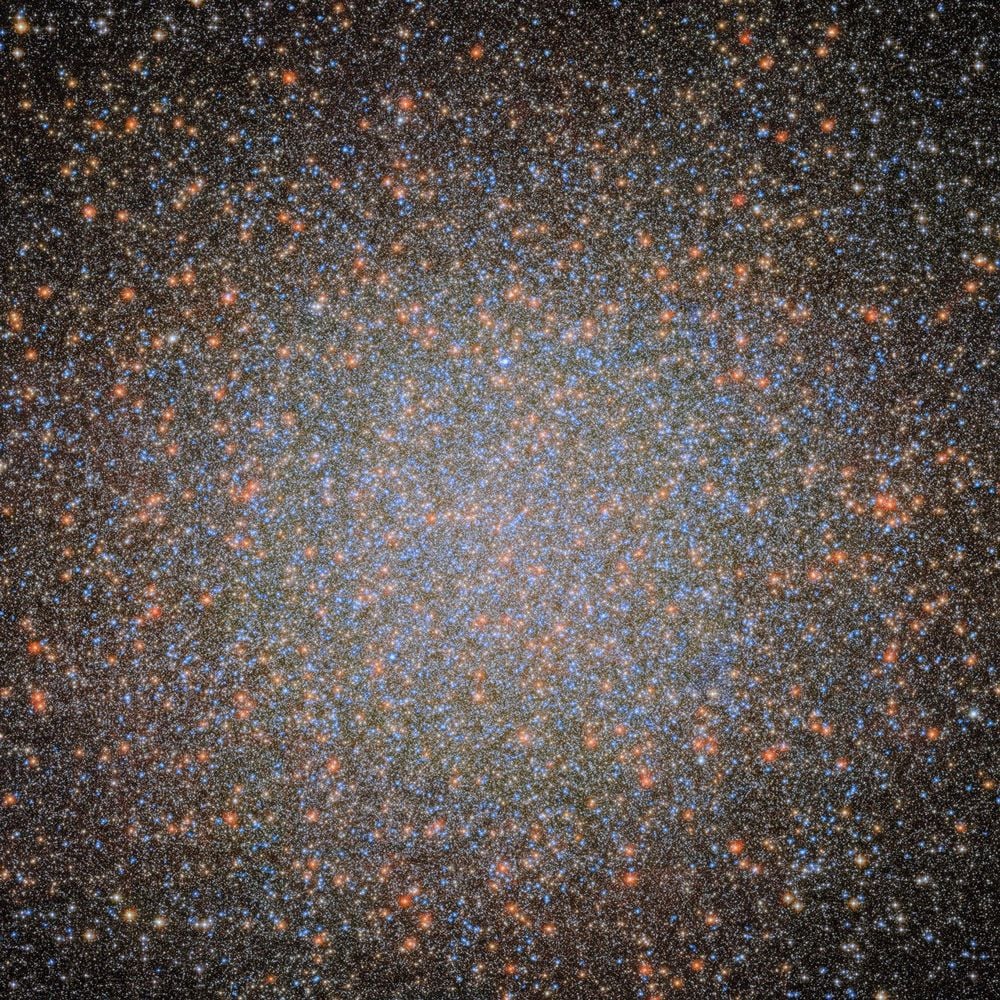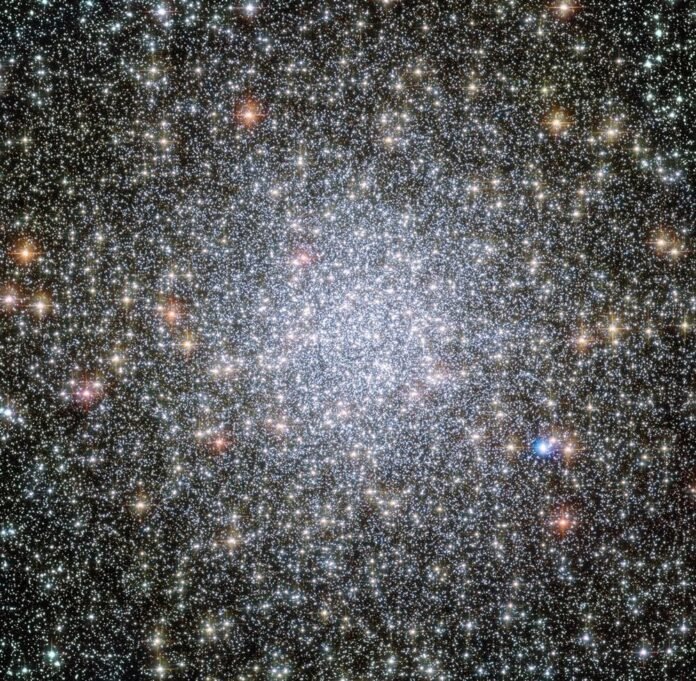Astronomers have studied the globular cluster 47 Tucanae extensively, but still have many questions. It may have an intermediate mass black hole in its center like Omega Centauri is expected to have. There are reasons to believe it may be the remnant of a dwarf galaxy that was gobbled up by the Milky Way, like other GCs. Also like other GCs, its center is extraordinarily dense with stars, and astronomers aren’t certain how far the cluster spreads. Individual stars in 47 Tuc are difficult to observe because they’re so tightly packed in the center and because they’re difficult to differentiate from field stars on its outer edges. Can the Vera Rubin Observatory help?
Early data from the Vera Rubin and its Legacy Survey of Space and Time (LSST) were designed to test and refine the telescope’s system. But it’s still good quality data, and researchers are using it to not only understand how the Vera Rubin Observatory (VRO) performs, but also for concrete science results.
New research used the VRO’s observations of 47 Tuc to uncover more stellar detail, including identifying stars in its core and in its outer regions. It’s titled “47 Tuc in Rubin Data Preview 1: Exploring Early LSST Data and Science Potential.” The lead author is Yumi Choi from the National Science Foundations National Optical-Infrared Astronomy Research Laboratory in Tucson, Arizona.
“We present analyses of the early data from Rubin Observatory’s Data Preview 1 (DP1) for the globular cluster 47 Tuc field,” the researchers write in their paper. The data is from four nights of observations with the VRO’s Commissioning Camera (ComCam). The ComCam is a smaller 144-megapixel version of the VRO’s full 3200-megapixel LSST Camera. The observations were made in the standard multiple bands (ugriz). u: Ultraviolet, g: Green (visible light), r: Red (visible light). i: Near-infrared, z: Further near-infrared.
 The left and middle images are both from the VRO’s ComCam. The image on the right is from Gaia. In all images, the center of 47 Tuc is tightly packed with stars and saturated with light. Image Credit: Choi et al. 2025.
The left and middle images are both from the VRO’s ComCam. The image on the right is from Gaia. In all images, the center of 47 Tuc is tightly packed with stars and saturated with light. Image Credit: Choi et al. 2025.
The authors explain that they wanted to address challenges in separating stars in 47 Tuc’s crowded center from background stars in both the Milky Way and the Small Magellanic Clouds. “We compile a catalog of 3,576 probable 47 Tuc member stars selected via a combination of isochrone, Gaia proper-motion, and color-color space matched filtering,” they write.
“The LSST ComCam imaging provided valuable early photometric measurements, while also revealing challenges from crowding, particularly near the core of 47 Tuc and toward the SMC,” the authors explain.
The researchers did more than just detect 3,576 probable stars. They also detected RR Lyrae variable stars, which are common in globular clusters, and eclipsing binaries. “Further, we successfully crossmatched known variable stars within the 47 Tuc field against the DP1 data, recovering three RR Lyrae stars and two eclipsing binaries,” they write. Eclipsing binaries can be difficult to detect with ground-based telescopes, and so can some variable stars. Despite “sparse temporal sampling” the ComCam was able to find them.
Crowded stellar fields like the tightly-packed core of 47 Tuc are challenging to observe. Astronomers combine multi-wavelength observations from multiple telescopes to achieve results. These first results from the VRO shows it has a big contribution to make. “Overall, while challenges remain, the DP1 data around 47 Tuc convincingly showcase Rubin Observatory’s strong potential for detailed stellar population and variability analyses in crowded stellar fields,” the researchers write in their conclusion.
 The Omega Centauri globular cluster. Globulars are characterized by their densely-packed centers, where differentiating between individual stars is challenging. Image Credit: ESA/Hubble, NASA, Maximilian Häberle (MPIA)
The Omega Centauri globular cluster. Globulars are characterized by their densely-packed centers, where differentiating between individual stars is challenging. Image Credit: ESA/Hubble, NASA, Maximilian Häberle (MPIA)
“Continued improvements to the Rubin Science Pipelines and in-kind programs dedicated to crowded-field stellar photometry are expected to deliver even higher-quality results in future DP2 and DR1.”
The VRO’s main effort will be its 10-year Legacy Survey of Space and Time. The LSST is a wide-field, multi-band survey of the visible sky that is both rapid and deep. Its results will tell us more about multiple issues in astronomy: dark matter, dark energy, supernovae, the Milky Way’s structure, and many more. It will also tackle globular clusters.
Astronomers still don’t know exactly how GCs form and how they might be connected to a galaxy’s dark matter. There are a host of outstanding questions.
Astronomers have hoped that the VRO will not only discover new globulars, but that it will also provide more precise measurements of individual GC stars. By providing precise, multi-band photometry for individual stars over a 10-year period, it will create accurate Color-Magnitude Diagrams (CMD) for vast numbers of stars in GCs. It will also observe tiny shifts in their positions over its decade-long survey. Not only that, but the VRO will observe GCs in other galaxies, allowing comparative study in away that hasn’t been possible.
The entire space community has been anticipating the VRO’s first light with great enthusiasm. With its first preliminary results in, it looks like the wait has been worth it and the observatory will deliver on its promise.


